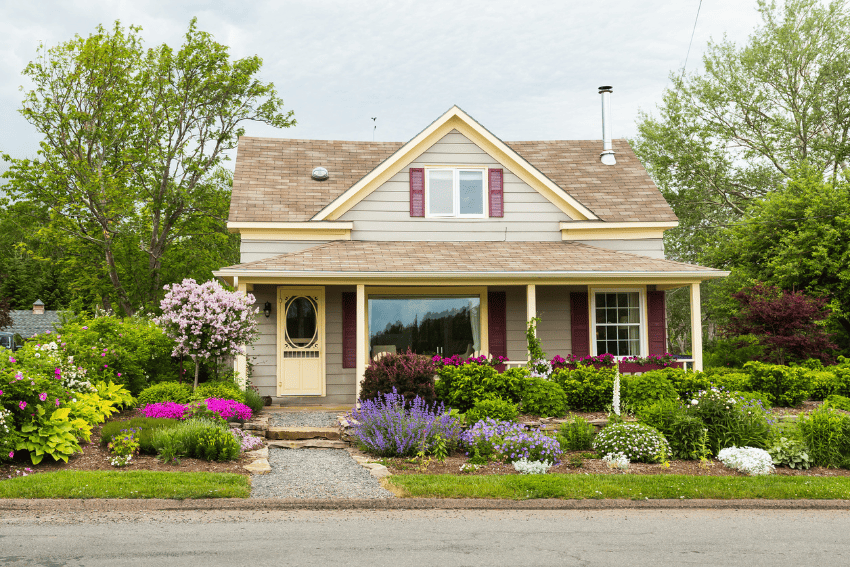
There are now so many different types of appraisals and property valuation options that I thought I’d list many of them here and explain them briefly – so agents are not confused when they see them referenced.
Here is a list of just some of the appraisal and valuation model types: (1) Full Appraisal; (2) Inspection-Based Waiver/Property Data Collection; (3) Full Appraisal Waiver or Property Inspection Waiver (PIW); (4) Desktop Appraisal; (5) Hybrid Appraisal; (6) Repair/Update/1004D Inspection; (7) Exterior-only/Drive-by; (8) Field Reviews; (9) Collateral Desktop Analysis (CDA); (10) Automated Valuation Model (AVM); (11) Appraisal Creole; (12) Appraisal Gumbo; (13) Appraisal Kabob; (14) Pan Fried Appraisals; (15) Deep Fried Appraisals: (16) Stir-Fried Appraisals; (17) Pineapple Appraisals; (18) Lemon Appraisals; (19) Coconut Appraisals; (20) Pepper Appraisals; (21) Appraisal Stew; (22) Appraisal Salad; (23) Appraisal and Potatoes; (24) Appraisal Burger; and (25) Appraisal Sandwich. That – that’s about it…
OK… I might have watched Forrest Gump recently, and I am making fun of the excess number of appraisal/valuation types – but I will attempt to explain some of the more prominent types below.
- FULL APPRAISAL – aka Form 1004/1073/1025 in Fannie Mae parlance (Cost: $500 to $900): This is the standard full appraisal that ALL jumbo lenders require and that is required by Fannie Mae and Freddie Mac IF there is no other appraisal of the property in their databases. These appraisals typically require interior and exterior inspections, photos of the interior, exterior, and street, and numerous comparable sales – provided by a licensed appraiser.
- Inspection-Based Appraisal Waiver or Value Acceptance + Property Data Collection (Cost: $185 – $250): This is the latest iteration of appraisal waivers, and it seems to be expanding upon the full inspection waivers (PIWs – see below) that surfaced years ago but that became much more prominent during COVID. These are effectively valuation waivers granted by Fannie or Freddie (by their automated underwriting software), but they also require a property inspection by a licensed “property data collector” who does not have to be a licensed appraiser. Once the inspections are done, the findings get run through the automated underwriting software again and that software may then call for a full appraisal based on the inspection report data – but that is rare. Issues that can spark a full inspection include an indication that a property is not what was originally thought (e.g. house is actually a duplex) or a major change with respect to the borrower’s qualifications.
- Property Inspection Waiver or (PIW), Value Acceptance or Full Appraisal Waiver (Cost: Free): These were much more prominent during COVID, and I blogged them in detail HERE. In summary, Fannie and Freddie sometimes require NO APPRAISAL at all – if there is an existing appraisal of the property in their database with a low (good) “CU” score; if the borrower is strong; and if the LTV is relatively low, e.g. 80% for purchases. Fannie recently renamed their appraisal waiver/PIW to “Value Acceptance,” but we’ll probably keep using PIW since it’s so much shorter! Fannie has also said that we’ll start to see fewer full appraisal waivers and more inspection-based waivers going forward.
- Hybrid Appraisal (Cost: $700 to $1,150): This is a combination of a property data collection plus a full appraisal. But, most lenders ignore them or don’t order them because they’re not cheaper or faster (they just order full appraisals instead).
- Desktop Appraisals (Cost: Not sure because we have not ordered one in so long): These are appraisals done entirely from a remote location using data available to the public from country records and MLS info. These appraisals are rarely requested nowadays, given the potential lack of accuracy (lenders don’t like to rely on them and appraisers don’t like to do them; appraisers like to see properties first-hand because county records and MLS data can often be inaccurate and because there are many nuances that public records miss).
- Exterior Only/Drive-By Appraisal (Cost: $350 – $500): These appraisals require no measurements or interior or rear inspections, and they are another type of appraisal report we have not ordered for years. They used to be more prominent before PIWs (Full Waivers) surfaced, and many Home Equity Line of Credit (HELOC) lenders still require them, but they are rarely if ever required for first mortgages now.
- CDA or Collateral Desktop Analysis (Cost: $250 to $400): This is an appraisal review done by a licensed appraiser from his or her desk – without going into the field. The reviewer goes through the entire appraisal to ensure everything appears consistent and accurate – with a particular focus on the comparable sales and value conclusion. Appraisal reviews are ordered if “CU” scores are too high, if it appears that important comparable sales were either missed or ignored, if an underwriter questions a value conclusion in general, or if an automated valuation model indicates that the appraiser’s estimate of value is too high. Some jumbo lenders require CDAs for most or all of their appraisals.
- Field Review (Cost: $400 to $500): This too is a formal appraisal review by another appraiser, similar to the CDA above, but it involves a field review too where the appraiser drives by the property and the comparable sales. Also, Field Reviews are done by another local appraiser, while CDAs can be done by any review appraiser nationwide.
- Re-Inspection/Repair & Update Report/1004D (Cost: $175 – $250): These are re-inspection reports done after the original appraisal. They are usually done to verify that repairs or actual construction have (has) been completed. New builds almost always require these reports if the appraisal was done during construction (very common), and properties with major structural or health and safety problems will require these reports as well, e.g. to prove a stove was removed from an in-law unit, a kitchen remodel was completed, missing floor coverings were installed, exposed wiring was covered, etc.
- AVM or Automated Valuation Model: These are value estimates generated entirely by computers – with minimal human input. These are used by underwriters to confirm that an appraiser’s value estimate is reasonable, and that no significant data was missed or ignored.
WHY I REMAIN PRO-APPRAISER: While many people cheer the elimination of appraisers with these various “waivers,” I don’t because it is so obvious to me how much can be missed when waivers are granted. These issues include structural problems like foundation and roof issues, health and safety issues, external influences (schools, busy streets, cemeteries, commercial space, etc.), outdated improvements, recent improvements, functional obsolescence, changed floorplans, view amenities, lot utility, etc.
Jay Voorhees
Founder | JVM Lending
(855) 855-4491 | DRE# 1197176, NMLS# 310167
























